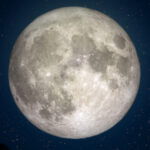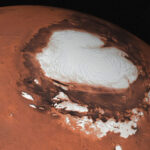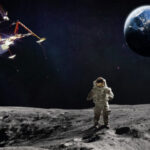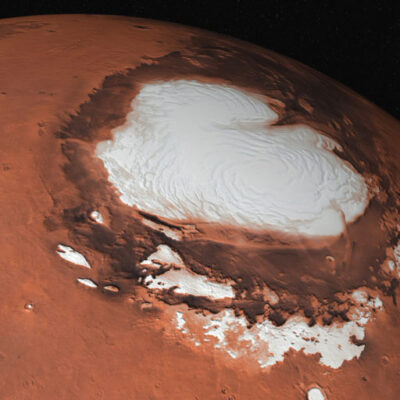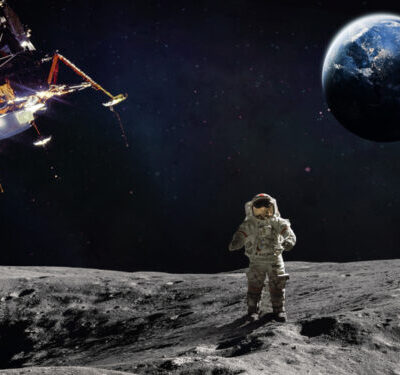
The phrase “airless moon” is often used to describe the Moon, but it is somewhat of an oxymoron. Despite its reputation, the Moon does, in fact, have a very thin atmosphere, which is composed of several layers. These layers are extremely tenuous and, at first glance, seem almost nonexistent when compared to Earth’s rich atmosphere. However, the Moon’s atmosphere plays an important role in the lunar environment, albeit in a very different way from Earth’s. The Moon’s atmosphere is so thin that it is unable to sustain life, and the concept of weather, as we experience it on Earth, does not occur in the same manner. Still, there is a complex, though subtle, weather system involving winds, rain, and clouds that arises from this faint atmospheric presence. Interestingly, the Earth’s magnetic field plays a crucial role in regulating the temperature and composition of the atmosphere. This is something the Moon lacks entirely, as it has no global magnetic field to protect its fragile atmosphere from the harsh solar wind.
In terms of composition, the Moon is fundamentally different from Earth. Our planet is chemically richer because it has been shaped by billions of years of interactions with water, which have gradually stripped away volatile elements and gases that could otherwise evaporate into space. In contrast, the Moon has not been subjected to the same geological forces and has remained largely unchanged for billions of years. The lack of water on the Moon means that volatile elements have been lost to space over time, leaving the Moon chemically impoverished compared to Earth. Water is a major factor in the development of Earth’s atmosphere and climate, and its absence on the Moon explains much of the stark contrast in their environments.
Another significant difference between the Earth and the Moon lies in their gravity. The surface gravity of the Moon is only about one-sixth that of Earth. This has a profound impact on how objects move and behave on the Moon’s surface. For astronauts or rovers traveling on the Moon, this difference in gravity makes mobility both easier and more challenging. The low gravity means that objects weigh much less on the Moon, making it easier to lift and carry them. However, this also means that movements are often slower and more awkward. Rovers sent to the Moon thus far have been able to travel only a few dozen kilometers at a time, and these vehicles have had to be controlled remotely from Earth due to the vast distance and lack of infrastructure on the Moon. The challenge of exploring the lunar surface will only become more complex as missions increase in scale and scope.
Looking ahead, NASA’s next manned mission to explore the Moon’s atmosphere is set to occur in 2026. The mission will focus on analyzing the composition of the Moon’s thin atmosphere and the ways in which it interacts with the solar wind. One of the key advancements for this mission will be the deployment of a new generation of lunar rovers. These rovers will be developed aboard the International Space Station (ISS) and then sent to the Moon for deployment. The new rovers will have a much greater range compared to previous models, capable of traveling up to 300 kilometers from their landing site. This expanded mobility will allow scientists to take samples from various sites across the Moon’s surface, which will offer critical insights into the Moon’s atmospheric composition and how it has evolved over time.
One of the most intriguing aspects of the Moon’s atmosphere is the role of oxygen. Scientists believe that oxygen in the Moon’s atmosphere is likely produced by a process known as outgassing, in which volatile elements like oxygen, silicon, magnesium, and aluminum are released from lunar rocks into the very thin atmosphere. While oxygen exists on the Moon, it is not in sufficient quantities to support life, nor can it be utilized in the same way as Earth’s oxygen. However, understanding how these elements are released and how they interact with the environment can provide important clues about the history of the Moon’s atmosphere and its evolution.
To complement these studies, the European Space Agency (ESA) is preparing to launch the BepiColombo mission, which will travel to the Moon by 2026. This robotic mission will not only investigate the composition of the Moon’s atmosphere but also explore how this atmosphere formed and evolved over billions of years. The mission will provide valuable data about the origins of the Moon and deepen our understanding of the processes that have shaped it.
In addition to lunar studies, the exploration of solar phenomena continues to expand our understanding of the universe. For instance, NASA’s Parker Solar Probe, launched on July 29, 2018, aims to study the Sun’s outer atmosphere. As it gets closer to the Sun, it will collect data on solar wind, magnetic fields, and charged particles to help scientists better understand the behavior of our star. In October 2018, the Parker Solar Probe made history by flying through the Sun’s outermost atmosphere—known as the corona—for the first time. This achievement allowed the spacecraft to reach speeds of 202 miles per second (325 kilometers per second), setting a new record for the fastest human-made object in history. The data collected by the probe will improve our understanding of the Sun’s behavior, which is essential for predicting space weather and its effects on Earth’s atmosphere and technology.
While the Sun’s atmosphere is quite calm compared to other stars, it still exhibits complex behaviors that impact our solar system. For example, the Sun’s gravity is the primary reason the Earth and Moon orbit around it. Without the Sun’s gravitational pull, these celestial bodies would be torn apart by tidal forces. Understanding these phenomena is vital to understanding the forces that govern not only our solar system but the behavior of stars in general.
On Mars, scientists have also been studying its atmosphere to better understand the planet’s climatic conditions. The volume of water vapor in Mars’ atmosphere is surprisingly higher than that of Earth’s, especially given that the Martian atmosphere is composed mostly of carbon dioxide (about 90 percent). Normally, carbon dioxide would trap the heat and prevent the formation of significant amounts of water vapor, but meteorite impacts on Mars have brought enough water ice to create the potential for oceans to exist on its surface. This raises many questions about Mars’ ancient climate and how its atmosphere has evolved over time. In addition, the Phoenix mission on Mars has detected small amounts of methane in the Martian atmosphere. Although methane is typically thought to be a possible indicator of biological activity, measurements from Earth-based telescopes have shown that the methane is rapidly destroyed by sunlight, ruling out this as a major source for the water vapor observed on Mars. Scientists are still trying to piece together the mysteries of Martian atmospheric behavior, and the data from various missions will likely continue to provide new insights.
In summary, while the Moon’s atmosphere may be thin and not conducive to life, it plays a crucial role in understanding lunar and planetary systems. The study of the Moon, solar phenomena, and Martian atmospheric conditions offers a broader understanding of the forces that shape our solar system and beyond. The upcoming missions and continuous scientific research promise to unveil further secrets of the cosmos, revealing a deeper, more intricate connection between the Earth, the Moon, the Sun, and other celestial bodies.

